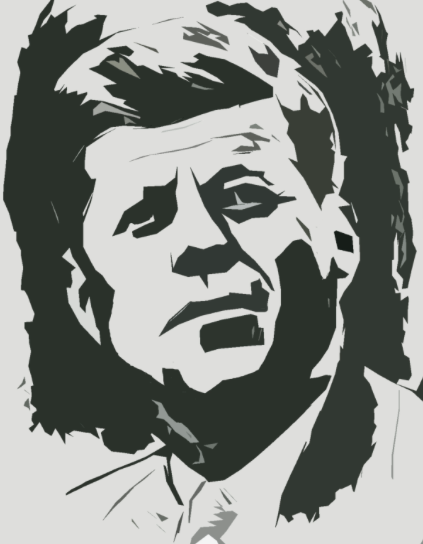The painter John Singer Sargent once famously said, “A portrait is a picture in which there is just a tiny little something not quite right about the mouth.” It’s true–capturing the likeness of a person is maybe the most challenging part of drawing or painting a portrait. Even if you’re very skilled, there are many times you’ll create something that looks convincingly like a person, just not the person you’re trying to depict.
What’s the secret? Well, besides “practice,” which is the most important part of learning any discipline, the key to getting a good likeness is to be less specific. At least in the beginning. Too often we seek to “zero in” on whatever makes a person look unique right away, that we lose track of the big picture. A person’s face is the sum of many parts coming together in the right way so they’re recognizable. When we obsess over this or that particular detail, we ignore the less distinguishing characteristics that are nonetheless just as important to the whole.
An excellent way to get out of this predicament is to think about value first, rather than line. Value refers to the light and dark areas in a subject- the highlights and the shadows. Often value is referred to as “shading,” but that’s not as clear since the value can also refer to the lightest areas of a subject or image as well as the darkest.
While line can have wonderful and dramatic graphic qualities and can produce excellent likeness, you have to be precise and accurate to achieve an effective likeness, as in the Portrait of Olga in a Hat with a Feather from 1920 by Pablo Picasso.

Even here, it can be argued how effective the likeness is in the absence of more visual information.
Those of us for whom fine-tuned control of a pen, pencil or brush is a challenge, can still master capturing a likeness. Look closely at John Singer Sargent’s portrait of Eugene Juillerat from 1878.

Value can do as much as or more than line can to capture the likeness in a portrait, while allowing you to be more expressive and less precise. Sargent’s brushstrokes are imprecise and gestural, yet the likeness seems strong because of the effective and economical way he has used value.
As you can see, even when the features are correct, line only tells part of the story. Look at the image below. Some of you might recognize the features in this face from only line, and certainly some of you won’t.

Line can give you the outer edges, but can’t do very much to describe the volumes of the subject. How far does the nose come out from the face? Does this man have deep set eyes or flatter features? Also, line can’t describe the color of his hair.
But when we add value, he becomes immediately recognizable as John F. Kennedy.

This is the exact same drawing as before, with charcoal added for the darker areas. In fact, you’ll notice that some features from the line drawing are almost completely obscured by these dark values and still the face is recognizable. The nostrils, for instance, have all but disappeared in the shadow of the bottom of the nose. His pupils and part of his jawline are also obscured by the dark values.

When the portrait is further reduced with a Photoshop filter to just a collection of simple shapes, the likeness remains as strong as ever. This is a great example of how when the value is considered first, the likeness can emerge without the precision placement of features and dependence on line quality that a portrait without value needs to be effective.
When you begin your next portrait, consider how working with value first can establish a likeness effectively even before the details emerge. As long as you consider proportion and placement of your values carefully, the challenge of capturing a likeness can be conquered. How will you tackle your next likeness?
Learn how to create your own narrative portraits. Plus, come back to the Bluprint blog tomorrow to discover inspirational famous watercolor artists.
Bring Faces to Life with Our Free Drawing Guide

Learn how to draw realistic faces that jump off the page.

Share tips, start a discussion or ask one of our experts or other students a question.
No Responses to “Discover the Secrets to Capturing a Likeness in a Portrait”